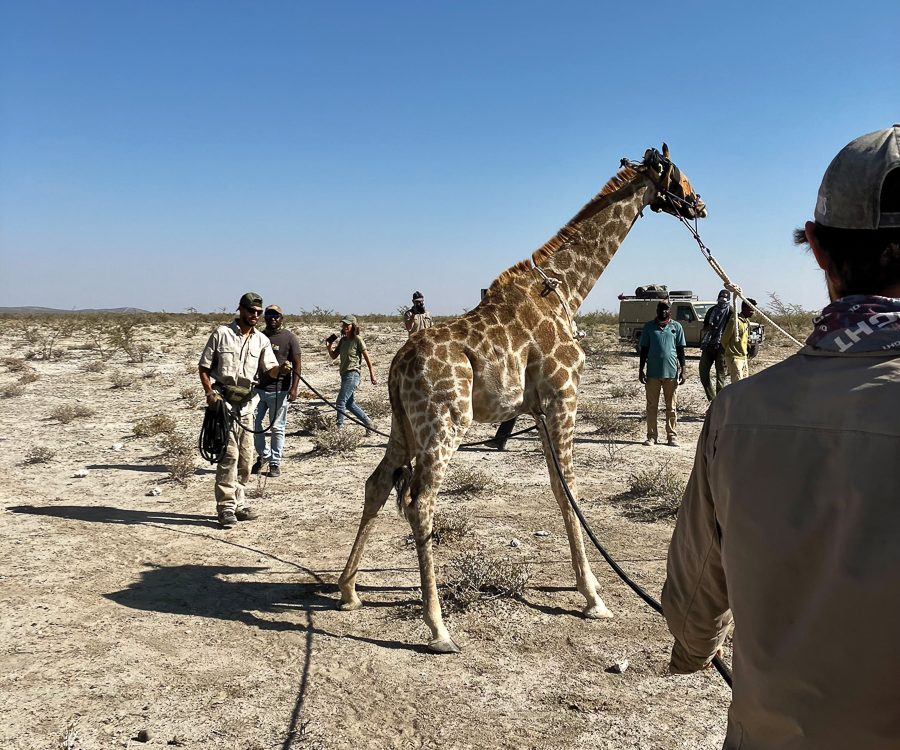Cycling through the hood
August 17, 2012Namibia travel tips
August 17, 2012By Conrad Brain
The slowly eroding basalt lava sheet in the Palmwag area of north-west Namibia is significant, not only for its geological splendour and host of endemic plants and wildlife; it is also a fortress that for many hundreds of thousands of years has held a population of black rhino in solitude and safety.
The unforgiving terrain, which is so rugged and remote, is virtually inaccessible. However, for decades now, dedicated people have been traversing this area on foot, on donkeys and on camels, helping the basalt lavas in the protection and monitoring of the very nucleus population of the world’s single-largest remaining black-rhino population.
The people of Save the Rhino Trust have walked many a good pair of shoes to pieces in their quest to understand and protect these rhinos in this land of rock, stones, gullies and cliffs. Over the years and in conjunction with Wilderness Safaris, the attraction of seeing these rhino roaming wild and free in their natural habitat has evolved into a globally sought-after experience.
All the black rhino are known by name and each has a file that includes growth characteristics, social interactions and reproductive history. The rhino called Teabag was so named because when first seen, the scout had no paper on him and wrote his notes on the last remaining teabag he had in his backpack.
How do you capture and translocate a black rhino out of an area inaccessible by vehicle? The answer is, of course, by air.
This population of black rhino, which originally served as the original donor population for all black rhino currently in Namibia, has had a long period of rest and growth.
After careful assessment, it was determined that once again this population could support a small but critical relocation to areas of former black-rhino range in remote north-western Namibia. Detailed studies were made by the Ministry of Environment and Tourism of possible release sites and two were chosen as ideal areas for the re-introduction.
In conjunction with local community and conservation organisations in the area, plans were formulated for a translocation, but there remained one major and seemingly impossible hurdle to overcome to turn these plans into reality: how do you catch and translocate the rhino out of an area inaccessible by vehicle?
The answer is, of course, by air, but the extremely specialised and expensive machines needed to do this were seemingly out of reach. It was at this point that the Millennium Challenge Account (MCA) joined the party and became a major player in making the proposed operation a reality. A powerful Huey helicopter was sourced and funded by MCA from Bird Dog Aviation in South Africa, and the operation could now move ahead.
It is a credit to the depth of specialised personnel and skills in Namibia that a crew of pilots, vets, conservationists, trackers and managers could be assembled to coordinate and implement an airborne operation of the proposed magnitude.
A fixed-wing aircraft, two helicopters – one for lifting and one for darting, logistical support vehicles, transport trucks, refuelling bowsers, six donkeys and the people to operate all these gathered at a windswept and dusty camp improvised next to the road from Palmwag to Sesfontein. From this unlikely base, an airborne capture operation unlike previously seen in Namibia was launched.
First light would be announced by the roar of the fixed-wing aircraft, which – with the assistance of trackers on the ground – would locate the rhino. The pilot would then call the darting helicopter and direct it to the rhino. Once the animal was darted and down, the aircraft would guide in the lifting helicopter, which would then sling the sedated rhino out of the inhospitable terrain.
It would then be processed at a predetermined site, have a tracking transmitter cemented into its horn, be transported to a pre-determined site and again airlifted to its new release site. At the release site trackers would monitor the post-release activities of the rhinos, and their overall response to their new home.
While describing the operation in a nutshell, this simplified explanation is devoid of the multitude of challenges and situations encountered when working in such a rough terrain with machines and animals that have little tolerance for man’s intentions, as good as they might be.
Strong winds, inconsistent draughts, rocks, cliffs, more rocks, and the time it takes for a darted rhino to succumb to the effect of the immobilising drug, all add to making each successful capture a triumph. This then excludes the slinging out of the rhino, the lowering of the animal softly to the ground crew, the processing and the lifting it again to a release site.
Taken all together, the operation was a feat of combined skill and experience and a credit to the in-house capacity of Namibia, especially considering that the entire operation from capture to release went without any loss or incident.
Just how well the rhino settle into their new locations will take many years of observation and monitoring to determine. However, it is these efforts that define range extensions due to an animal that once, not that long ago, seemed destined for extinction. Now that the aircraft noise, beat of helicopter blades and disturbance have left the mountain domain and fortress of the rhino, they settle once more and their retreat remains as secure as the basalt that encircles them.
This article appeared in the Autumn 2012 edition of Travel News Namibia.




